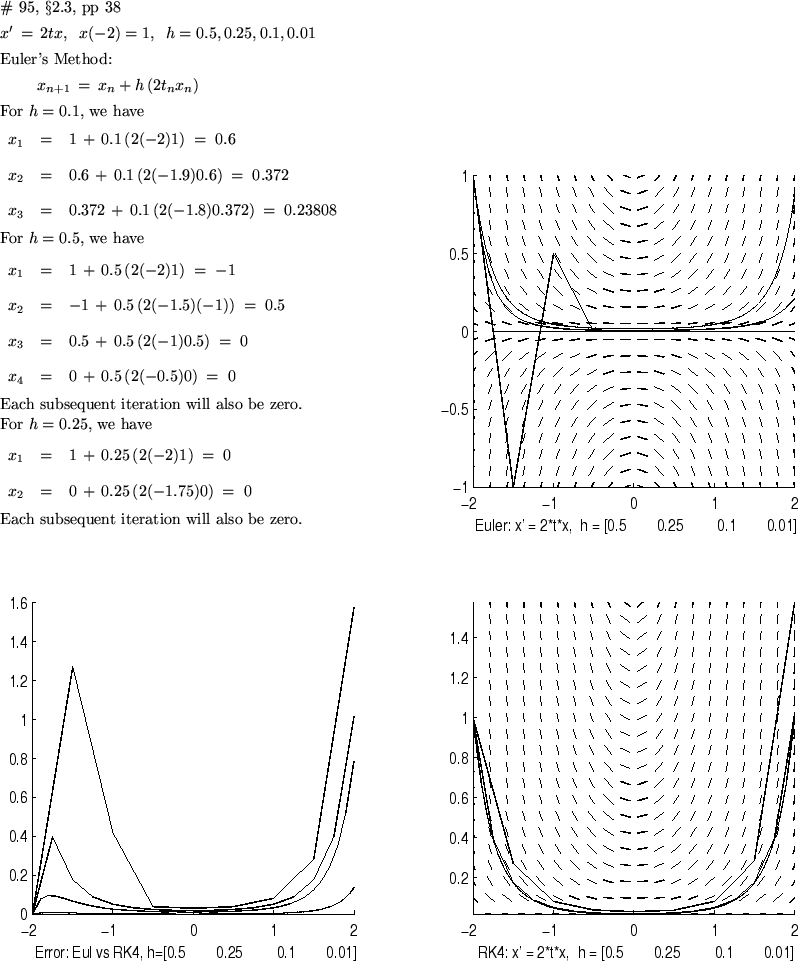Use Euler's method to approximate a solution to the ODE. By hand, set up the iterating equation and solve for three iterations using the initial condition
and step size
. Next investigate both Euler's method and the 4th order Runge-Kutta method graphically using num3plot with the four step sizes
. Identify each plot with its respective step size. Explain the rather odd behavior for
with
when all plots are compared. You may need to calculate a few Euler iterations by hand for these step sizes. (Does this suggest more than one way that step size can affect results?)
![\begin{eqnarray*}
x_1 &=& 1 \,+\, 0.1 \,(2(-2)1) \;=\; 0.6 \\ [1ex] x_2 &=& 0.6 ...
...\ [1ex] x_3 &=& 0.372 \,+\,
0.1 \,(2(-1.8)0.372) \;=\; 0.23808
\end{eqnarray*}](img70.gif)
ftx='2*t*x'; eulerfcn='x+h*(2*t*x)'; hvec=[.5,.25,.1,.01]; t0=-2; tf=2; x0=1;Save, then type initn to initialize the variables (or copy-and-paste at the Emporium).
![\begin{eqnarray*}
x_1 &=& 1 \,+\, 0.5 \,(2(-2)1) \;=\; -1 \\ [1ex] x_2 &=& -1 \,...
...0.5) \;=\; 0 \\ [1ex] x_4 &=& 0 \,+\, 0.5 \,(2(-0.5)0)
\;=\; 0
\end{eqnarray*}](img73.gif)
![\begin{eqnarray*}
x_1 &=& 1 \,+\, 0.25 \,(2(-2)1) \;=\; 0 \\ [1ex] x_2 &=& 0 \,+\,
0.25 \,(2(-1.75)0) \;=\; 0
\end{eqnarray*}](img75.gif)
